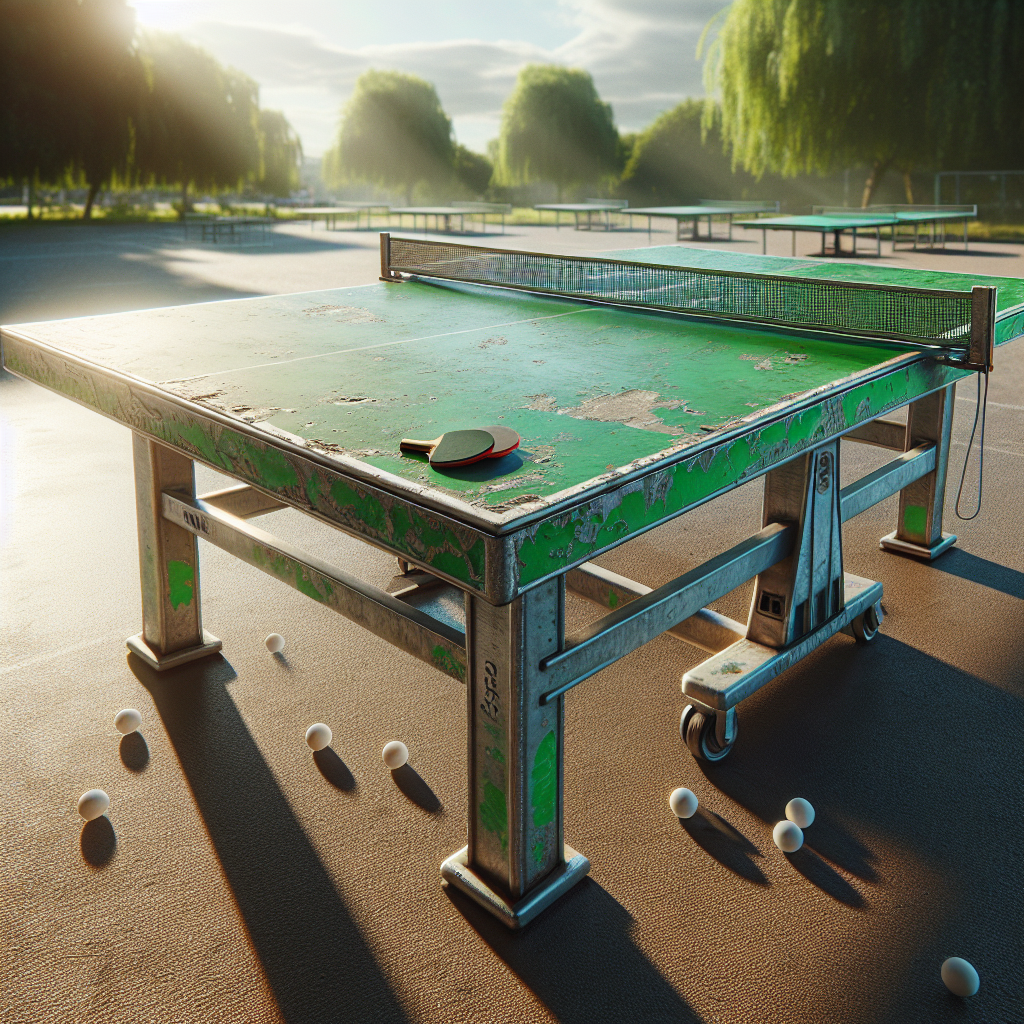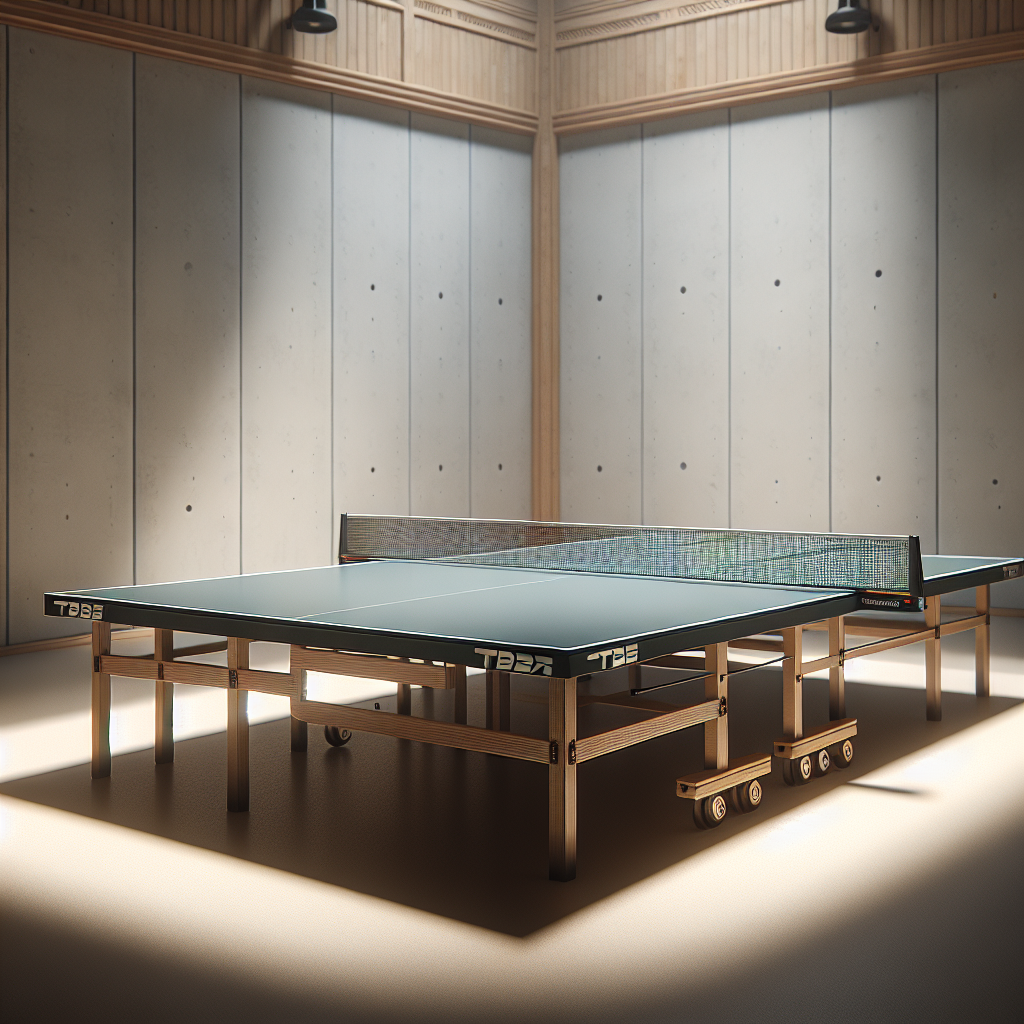Getting the Hang of Table Tennis Rules
Playing table tennis is a blast, but knowing the rules can make or break your game. Let’s break down the basics of scoring and serving so you can play like a pro.
Scoring System
In table tennis, you play to 11 points, and matches are usually best three out of five games. But here’s the kicker: you gotta win by two points. So, if you hit 10-10, it’s “deuce” time, and the serve switches every point until someone pulls ahead by two (PongFit).
Keeping score is key. Every point counts, and the first to 11 with a two-point lead takes the game. Simple, right?
Serving Rules
Serving in table tennis has its quirks. You gotta toss the ball straight up at least 6 inches, smack it on the way down, and make sure it bounces on your side before hopping over to your opponent’s side. No funny business.
In singles, you serve two points in a row, then it’s your opponent’s turn. But if you hit 10-10, the serve switches every point until someone wins by two.
Doubles play mixes it up a bit. The serve has to go from the right court to the right court, and partners switch spots after their team serves twice. This keeps things fair and square.
Knowing the scoring and serving rules is a must for any table tennis player. Stick to these, and you’ll have a fair and fun game. For more nitty-gritty details, check out the official table tennis rules.
As you get better at table tennis, you’ll want to learn more about other rules and good sportsmanship. These help make the game enjoyable for everyone.
Gameplay Rules
Alright, let’s talk table tennis! Knowing the rules is key to having a fun and fair game. We’re diving into two big parts: doubles play and the whole deal with volleys and faults.
Doubles Play
Doubles in table tennis is like adding a bit of spice to your game. Two players on each side make it more exciting and strategic. Here’s the lowdown:
-
Serving: In doubles, you gotta serve from the right court to the right court. After your team serves twice, you switch spots with your partner (PongFit). This keeps things fair and stops one person from hogging all the serves.
-
Hitting the Ball: When it’s rally time, you and your partner have to take turns hitting the ball. No one-man shows here! This makes the game more dynamic and fun.
-
Scoring: Scoring in doubles is pretty much like singles. Each team serves two points in a row, but if you hit 10-10 (deuce), you switch serves every point (PongFit). This keeps the game intense and fair.
Teamwork is the name of the game in doubles. You gotta talk, move together, and plan your moves to beat the other team. For more on doubles rules, check out our article on ping pong rules doubles.
Volleys and Faults
Volleys are a big deal in table tennis. A volley means hitting the ball back and forth without letting it bounce. But here’s the kicker: volleys are a no-go in table tennis. Hitting the ball before it bounces is a fault.
-
Faults: If you hit the ball before it bounces on your side, your opponent gets a point. This rule makes you wait for the right moment to strike, adding a layer of strategy.
-
Doubles Faults: In doubles, the ball has to land in the right part of the opponent’s court. If you hit it out or it touches your body, the other team scores. So, stay sharp and keep your shots clean.
Sticking to these rules keeps the game fair and fun. Whether you’re playing singles or doubles, knowing the rules about volleys and faults is crucial. For a full rundown on table tennis rules and scoring, check out our article on ping pong rules and scoring.
Table Tennis Etiquette
Table tennis isn’t just about hitting a ball back and forth; it’s about showing respect and playing fair. Knowing and practicing good etiquette makes the game more fun for everyone.
Sportsmanship Expectations
Being a good sport is key in table tennis. Here’s what you should keep in mind:
-
Play Fair: Always play by the rules. If you lose a point, admit it. Don’t argue with the referee or umpire.
-
Respect Your Opponent: Treat your opponent with kindness and fairness. No taunting, trash-talking, or over-the-top celebrations.
-
Keep Cool: The game can get intense, but don’t let your emotions get the best of you. Stay calm and avoid angry outbursts.
-
Be Encouraging: Compliment your opponent on good shots and offer encouraging words. A positive attitude makes the game better for everyone.
Conduct During Matches
Besides good sportsmanship, there are specific behaviors to follow during matches:
-
Hands Off the Table: Don’t touch the table with your free hand or any part of your body during a rally. This includes accidental contact like brushing the table with your clothes. Keeping this rule ensures fairness.
-
Know the Let Rule: If your serve hits the net but still lands on the opponent’s side, it’s a let and you replay the serve. If it doesn’t reach the opponent’s side, they get the point (Killerspin). Be aware of this and act accordingly.
-
Follow Doubles Rules: In doubles, make sure the ball lands in the correct part of the opponent’s half (Killerspin). Knowing and following these rules keeps the game fair and clear.
By showing good sportsmanship and following proper conduct, you help create a positive and enjoyable table tennis experience for everyone. Remember, good etiquette goes beyond the rules and helps build a friendly and respectful community.
Table Tennis at the Olympics
Table tennis at the Olympics is a thrilling spectacle, drawing in players and fans from every corner of the globe. Let’s break down the event formats and China’s iron grip on Olympic table tennis.
Event Formats
Olympic table tennis features both team and singles events for men and women. In team events, squads face off in a best-of-five format, including four singles matches and one doubles match. Each match is played over the best of five games. To win a game, a player or team must reach 11 points and have a two-point lead.
Singles competitions are a bit different, with individual players battling it out in a best-of-seven format. The first player to win four games takes the match. The scoring system is the same as in team events: reach 11 points and win by two.
Dominance of China
China’s dominance in Olympic table tennis is nothing short of legendary. They’ve racked up an eye-popping 60 medals, including 32 golds. Their success boils down to intense training, unwavering dedication, and a laser focus on the sport. Chinese players are known for their mind-blowing techniques, precision, and agility, making them nearly unbeatable.
But it’s not just China in the mix. Countries like Japan, South Korea, and Germany have also made their mark, challenging China’s supremacy with their own top-tier talent and determination.
As the Olympic Games roll on, the table tennis competition remains a must-watch. Will anyone topple China’s reign? Only time will tell.
Understanding the event formats and China’s dominance gives us a deeper appreciation for the skill and competition that make Olympic table tennis so captivating.








